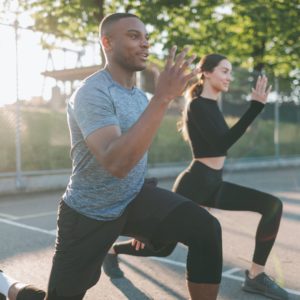“A new study published by The British Medical Journal found that inactivity can kill you. I mean, these are the kind of findings that just scare the hell out of Congress.” – Jay Leno.
Many people live in a frantic, always busty, overloaded-schedule mode most days of their lives. It seems to be a luxury to have more than half an hour in a day when something isn’t needing to be done or attended to. Most people are likely to suffer the effects of continual stress and lack of sleep because of their lifestyles.
Except for those that don’t.
A significant segment of the American population is suffering the effects of doing too little.
Not that they are lazy or simply “do nothing” during their days. But their jobs often require little or no physical activity – they spend their workdays in front of a computer or behind a counter. And, like any other demanding occupation, they go home at night tired from the strain and stress of work, even though the work may not have been physical.
So, they enjoy relaxing and watching TV, movies, or playing video games. And sit.
The Insidious Plague of Inactivity
The late health and fitness pioneer Jack LaLanne once said,
“So many older people just sit around all day long, and they don’t get any exercise. Their muscles atrophies, and they lose their strength, energy, and vitality by inactivity.”
And while this is certainly as true today as it was when he said it, it’s also true for those not older.
The 2021 Physical Activity Council’s Overview Report found that, while the majority of younger Americans – those under 45 – described themselves as casually to highly active, over 22 percent of all respondents between the ages of 18 and 44 identified as inactive.
That’s almost one out of every four. Or more than 50 million adults under 45.
And the figure was around 30 percent or more for those over 45. All of this means that the state of being physically inactive is not limited to just an unfortunate few who cannot be active. And the physical, mental, and emotional consequences of prolonged inactivity are taking a toll on them.
Slowly Fading Away: Inactivity and the Human Body
Generally speaking, according to the Centers for Disease Control and Prevention,
“Not getting enough physical activity can lead to heart disease—even for people with no other risk factors. It can also increase the likelihood of developing other heart disease risk factors, including obesity, high blood pressure, high blood cholesterol, and type 2 diabetes.”
And an article from the National Institutes of Health reported that deconditioning due to restricted physical activity results in large decreases in muscle mass and strength, as well as increased fatigability due to changes in muscle metabolism.
Deconditioning refers to the changes in the body that occur during prolonged periods of inactivity. The changes happen in the heart, lungs, and muscles, and they make you feel tired and exhausted and can even decrease your ability to be active.
And what about your muscles?
According to Harvard Health,
“Muscle atrophy, the loss of muscle tissue, can emerge after a period of inactivity. Age-related muscle loss, called sarcopenia, is a natural part of getting older. But after an injury, illness, or any prolonged period of inactivity, muscle loss can occur faster, leading to muscle atrophy.”
Prolonged inactivity or a sedentary lifestyle can weaken your muscles to the point that they experience muscle soreness from everyday activity. This can be actions as simple as lifting a box or climbing stairs. In addition, this soreness can develop into muscle tension, causing your muscles to shorten.
As Live Strong notes,
“Eventually, muscle shortening can lead to the development of what are known as ‘trigger points’ — tight knots of muscle tissue. These knots may require massage or trigger point release to reduce muscle tension — an effective intervention — as demonstrated in a September 2018 study of 62 patients, published by American Journal of Physical Medicine & Rehabilitation.”
And the American Council on Exercise has shown that many people who spend a lot of their time sitting at a desk can suffer from muscle shortening and tension in the front of their hips, chest, and other muscles on the front of their shoulders.
A Two-Pronged Approach to Eliminating Muscle Pain from Inactivity
At Pain and Performance Solutions, we understand that the only way to bring complete and lasting relief to acute and chronic muscle pain is to deal with the source.
In this instance, the physiological source of your muscle pain may be muscle shortening, tension, and other effects of muscle atrophy. However, the underlying and overriding cause is inactivity. So, this has to be addressed along with the trigger points and other physical contributors.
This means making a real commitment to a regimen of physical exercise and activity. This is certainly not easy for most people, especially for those who haven’t been active since childhood.
The good news is that there are multitudes of options, including fitness clubs, online communities, and other resources to help with that strategy. And the other approach is to deal directly with the present pain issues that you may be suffering from.
Get Off the Couch and Find Relief from Muscle Pain at Pain and Performance Solutions
At your first appointment, we will learn all we can about your present pain and condition, along with any history of discomfort.
Treating and relieving pain at Pain and Performance Solutions begins once we understand where and how your pain started.
A full examination will help us determine which form of treatment is best suited to get you on your road to recovery. Ultimately, getting your body healthy and working properly is the only way to achieve total recovery, and your trust in us is key, as is your honesty.
We encourage you to contact us. We’re here to help and will answer any questions that you may have.
Our goal is to work through the sequence of pain and dysfunction to get your body healthy and working properly and achieve total recovery.
You can reach us at (707) 636-4404 or by filling out our online contact form.
